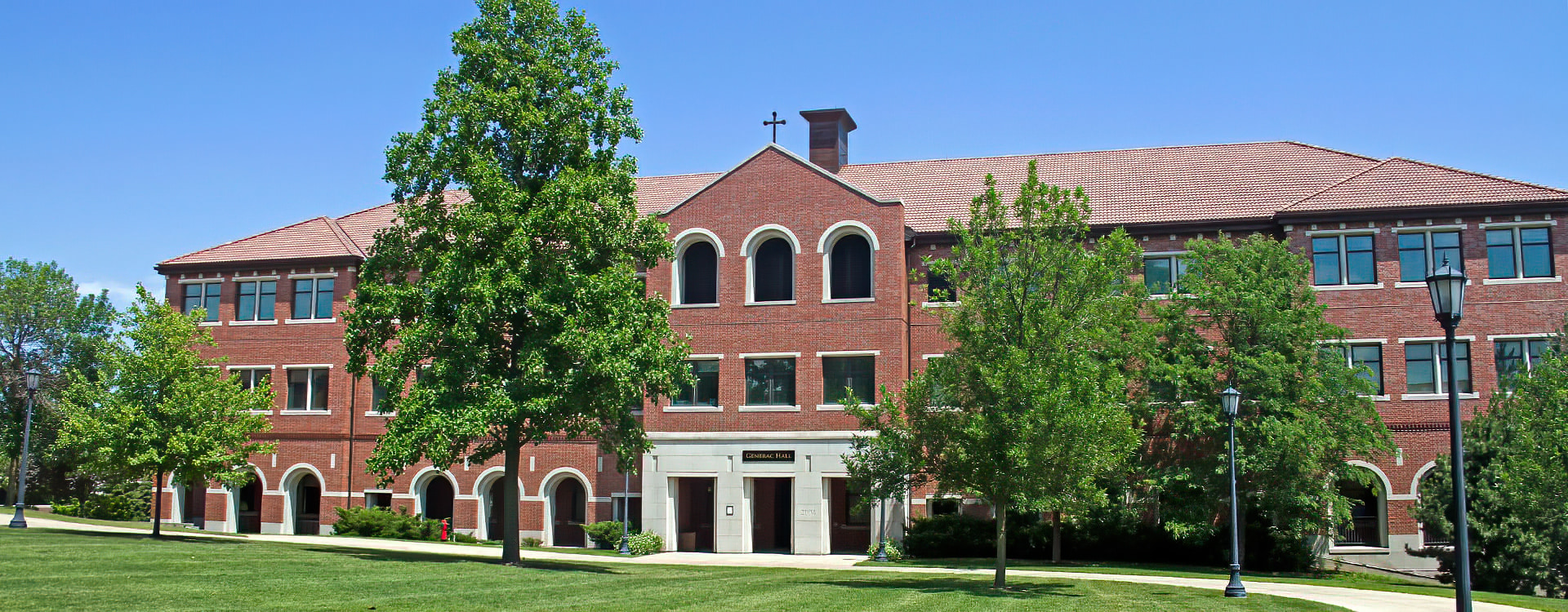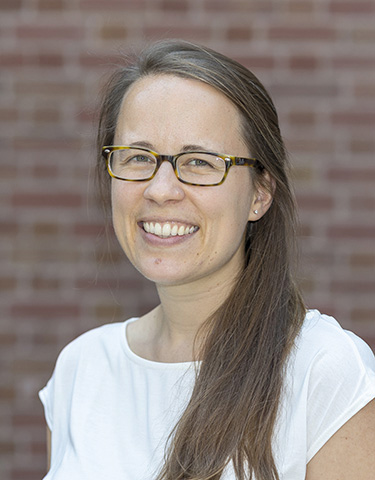Education
- Ph.D., University of Arizona, Mathematics
- B.A., Bethany Lutheran College, Mathematics
- B.A., Bethany Lutheran College, Theatre
Background
Prior to college, I was very interested in the humanities, and my plans were to double major in English and theatre. One of the amazing things about attending a liberal arts institution is that you get to take courses in a wide sampling of fields during your first years in college, and this can sometimes spark interests that you never knew you had! A Gen-Ed math class (Calculus I) opened up my eyes to a whole new world. I found the inherent challenge of learning math to be very stimulating, and fell in love with the beauty and sense of wonder that comes with understanding a new idea or glimpsing for the first time a new part of the mathematical landscape (incidentally, I also love hiking in physical landscapes).
When in 2019 my husband and I both accepted calls to serve WLC, God called us here all the way from France. We met during graduate school in Tucson, Arizona, and then enjoyed a three-year stint near Paris during Jeff’s postdoc. We learned the language by immersion and I finally met some of my mathematical “ancestors” who are based in the Paris area. In addition to my vocations as math professor and wife, I’m very blessed to be a mom. Our family loves traveling and adventuring together, as well as practicing hospitality when we’re at home. We are members at St. Marcus Lutheran Church in Milwaukee.
I love teaching at WLC for a number of reasons. Part of the mission and vision of the college is to remain faithful to the Scriptures while training students for servant leadership through the liberal arts, and each of these things really informs what we do on a day-to-day basis! I also love being at a small enough institution that I get to teach the same students at several stages of their college career, and to mentor them throughout their time with us. There is a great deal of opportunity to get to know students and tailor their education to them as individuals when the program is this size. In classes, I try to incorporate projects that give students the opportunity to think about an idea for an extended period of time, take ownership of the problem and their solution, balance individual with collaborative work, and communicate effectively what they’ve come to understand. These are skills which need to be practiced and will help prepare students for their next adventure after college, whether that is grad school, teaching, or a career in business, industry, or government. Beyond classes and growing out of my relationships with students in that context, I really enjoy connecting them with outside opportunities like conferences and summer research programs.
Teaching
- MAT 117 – Elementary Statistics
- MAT 221 – Calculus I
- MAT 222 – Calculus II
- MAT 224 – Ordinary Differential Equations
- MAT 230 – Discrete Mathematics
- MAT 421 – Real Analysis I
- MAT 423 – Complex Analysis
Research Interests
One of the first things that intrigued me about theorem-proving in mathematics is the combination of creative and rigorous thinking which is required: creativity to try several approaches until one works, rigorous thinking to use logic and mathematical structure appropriately and to evaluate the correctness of my argument. The actual business of proving a theorem involves a cycle of these two ways of thinking: discern the problem and appropriate starting point, think about different possible approaches and try one, evaluate whether that first approach was correct or not and whether it made progress toward the desired result, then take that self-feedback and iterate the process until a correct and beautiful proof emerges. As time went on and I learned the basics in a few fields of mathematics, another idea that intrigued me was the intersection of two or more of these seemingly-different areas in mathematics.
As an undergraduate student, I had the opportunity to do two research projects. The first one was in the intersection of abstract algebra and computational methods. I worked with a team of peers to write computer programs that implemented already-developed theory to classify all the groups with a certain property. (In our abstract algebra course, MAT 431, you’ll learn what groups are!) My other research project was in the intersection of linear algebra and real analysis, an intersection which is important enough that it is a field of math in its own right, called functional analysis (you could take a course in functional analysis during graduate school!). In this project, we studied a kind of geometry where the “points” are objects called “operators” (which are themselves generalizations of functions). To gain intuition about our problem, we played with finite-dimensional versions of operators, which are just matrices (you’ll learn all about matrices in our linear algebra course, MAT 333). Once we had an intuitive idea of how the operators behaved under certain mappings, then we generalized and proved the results using techniques from analysis (you will get an introduction to the field of analysis, my specialty, in MAT 421). Long story short, the courses in a math major train students in the fundamental ideas, techniques, and rigorous thinking that opens up so many possibilities for interesting problems to solve!
My graduate work was in the intersection of analytic combinatorics (counting problems solved using analysis techniques), discrete dynamical systems (systems which change at regular intervals of time), and integrable systems (systems which have a conserved quantity, like conservation of energy). My contribution is a different way of looking at certain results (elegant formulas which solve a certain counting problem, originally conjectured by physicists using the path integral formulation of quantum mechanics) and showcasing the deep mathematical structure underlying these results that seemed to just be “tricky” at first. The creative process of discovering a useful way to think about the problem included computer simulation work to visualize the time-dynamics. The rigorous proofs, once I understood what was going on, included ideas that Calculus II students can understand (you’ll learn them in MAT 222) as well as properties of elliptic functions that I had to learn just to write the proofs!
I am currently interested in more broadly understanding the discrete dynamics of certain systems, including the one from my graduate work. A group of senior-level WLC students helped me begin investigating these systems using computer visualization. In these early phases, we’re looking at computer-generated pictures of the systems and comparing what happens when we change the domain of the functions, “turn on” a part of the system which depends on its history, and so on.
Another developing interest of mine is in applied mathematics. The subject on its own is beautiful, but as the physicist Eugene Wigner famously commented, mathematics is also “unreasonably effective” at explaining structures in the natural sciences, and even making empirical predictions or pointing the way to future advances. Mathematical modeling is the process of explaining structures in the “real world” by using various tools from mathematics. A blend of creative and rigorous thinking are just as necessary for applied math as they are for theorem-proving: defining the problem, determining assumptions that simplify the problem just enough, figuring out a mathematical structure that captures the essential parts of the problem, solving that mathematical problem, and translating the mathematical solution back to the original problem domain are each steps in mathematical modeling that combine both modes of thinking.
Scholarly Works
Publications
Brown, T., N. M. Ercolani. 2020. Integrable Mappings from a Unified Perspective. Integrable Systems and Algebraic Geometry I, Cambridge University Press: London Mathematical Society Lecture Note Series, Vol. 458.
Lindberg, T., N. Fieldsteel, T. London, H. Tran, H. Xu. 2013. Classification of Groups with Strong Symmetric Genus Up To Twenty-Five. Houston Journal of Mathematics. 39(1): 51-60.
Lindberg, T., D. Ethier, A. Luttman. 2010. Polynomial Identification in Uniform and Operator Algebras. Annals of Functional Analysis. 1(1): 105-122.
Selected Presentations
“Integrable Mappings from a Unified Perspective.” AMS-MAA Joint Mathematics Meetings, AMS Special Session in Combinatorial Structures and Integrable Systems, Denver, CO; January 15, 2020.
“An Integrable Dynamical Systems Approach for Solving Recursive Map Enumeration Problems.” Poster presentation. Combinatorics and Interactions, Centre Internationale de Recontres Mathematiques, Marseille, France. January 10, 2017.
“Dynamics of Discrete Painlevé-I Through Elliptic Functions.” Analysis, Dynamics, and Applications Seminar, Department of Mathematics, University of Arizona. March 8, 2016.
“Combinatorial Hamiltonian Dynamics.” AMS-MAA Joint Mathematics Meetings, AMS Special Session in Integrable Systems, Painlevé Equations, and Random Matrices, Seattle, WA; January 6, 2016.
“Scaling Limits of Random Walks in Random Environments.” Mathematical Physics and Probability Seminar, Department of Mathematics, University of Arizona. March 25, 2015.
“The Connection Between Map Enumeration and Matrix Integrals.” Current Ideas in the Mathematical Sciences Recruitment Workshop, Department of Mathematics, University of Arizona. March 10, 2014.
Service
- Faculty Affairs Committee
- National Science Foundation Reviewer
- Conference Organizer SIMIODE EXPO 2022
Professional Memberships
- Mathematical Association of America
- Project NExT Fellow (Brown 2020 cohort)


 Mathematics
Associate Professor
Mathematics
Associate Professor